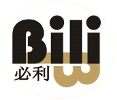Product Development: From concept to design to prototyping to mass production in China.

In this article Bili International we share some of our experiences and the challenges we face in developing a product and or building a prototype in China.
What is often most under estimated is the time required to develop a product and or build a prototype. A prototyping workshop has a variety of industrial parts, various materials and various people with engineering knowledge, practical knowledge, real life experience and just plain old good ideas to make a product to function well.
Second most under estimated aspect of prototyping is the cost involved to spend the time and go through the process to get a product good enough for its first trial runs by the end user. To better understand the time required to build or develop a product lets look at the general steps a product goes through from concept to end user.
The basic process of prototyping:
- Individual or company has an idea or concept.
- Clarification of the products purpose and application.
- Clarification of the intended end user.
- Create drawings of that concept.
- Drawing approval.
- Build necessary tooling, jigs or fixtures to make parts.
- Set up and calibrate machines and equipment to do processes.
- Procure parts and materials.
- Make a sample or “prototype” of those drawings. (Called a “First off”)
- Evaluation of the “first off” prototype.
- Adjustments and modifications made to the “first off” and build a “second off”.
- Adjustments and modifications made to the “second off” and build a “third off”.
- At this point with most products it should go to the end user for use and or feedback as the product is functioning in its actual working environment.
- With end user feedback build a “forth off” and evaluate.
- Continue this process until the product is suitable to meet end users purpose.
- Build manufacturing jigs and fixtures if mass production is required.
- After some time of use, possibly months or years the product can be reevaluated based on customer feedback to make even further improvements for cost reduction and or efficiency and effectiveness.
Definition of a prototype:
A prototype is an early sample, model or release of a product built to test a concept or process or to act as a thing to be replicated or learned from. It is a term used in a variety of contexts, including semantics, design, electronics, and software programming. A prototype is designed to test and trial a new design to enhance precision by system analysts and users. Prototyping serves to provide specifications for a real, working system rather than a theoretical one. (Wikipedia)
As you can see from a basic definition and the general steps in building a prototype is going to take time, cost, understanding and patience to get to the stage where you have a functioning product to meet the needs of the end user and application. We really need to spend more time thinking though the product right through to the end application to make a clearer picture at the start. Making changes can affect the whole prototyping or manufacturing process and set everyone back if it is not well thought through.
- What problem does this product really solve?
- Why does it solve these problems?
- Who is going to be using it? (Young, old, simple or skilled people.)
- Where is it going to be used? (Indoors, outdoors, in extreme conditions or not.)
- When is it going to be used? (Year round or only in certain seasons.)
- How exactly is it going to be used? (Simple, complex, safely, etc.)
Clarity of purpose:
When designing, thinking about and developing your concept we need to ask ourselves the basic and only six questions in the English language; the five “W’s” and sometimes “How”. We need to brainstorm these questions with various people and or focused group to get the best possible answers before launching into a prototype. This in itself will save lots of time and cost and reduce the amount of changes needed throughout the process.
Personal preferences and emotional attachment to the product:
One of the biggest challenges we get from entrepreneurs and inventors as compared to corporations is their personal attachment to a particular feature, function, look and or feel of the product. Although these characteristics are important individuals get so attached to their idea they fail to be able to see it objectively and either knit-pick over insignificant issues or try to fit the prototype to their way instead of building it to fit the materials and processes that have to make it. Even worse they fail to see it from the end users perspective because they like it like this or that. Products are not house renovation and decorating where you are the end user and you can and should be as picky as you want. 90% of the time the products going to someone that is much different than you in which you will need to objectively seek out their opinion and let go of your own.
Designing your product to suit the potential manufacturer:
As I briefly mentioned above you really need to consider who will manufacturer the product. It is fine for us to build any complexity of prototype but if the product is going to go into mass production them you will need to consider the materials and workers that will manufacturer the product. Complex and high tolerance designs are cool but if it is going to be made in China then you need to consider relatively unskilled workers in poorly organized and managed facility is going to be doing the work. When creating your product consider the manufacturer and consult with the prototyping company or manufacturer to help you develop your design especially if your going to have it made in China or another under / developing country.
For the most part there are almost no decent workshops and we don’t have good industrial part supply stores to buy the variety of parts, fasteners, brackets, tools and materials required for the job. It is a lot more challenging and that is why Bili International set up our own workshop with western quality welders, grinders, tools, work benches, a variety of materials for prototyping. Along with our ten years experience and long-term cooperation’s with factories in most industries we now have excellent resources to develop products, build prototypes and if required set up a facility or two for mass production of your product.
What about Rapid Prototyping? Rapid Prototyping is kind of an oxymoron. There is nothing rapid about this process. The term “Rapid Prototyping” developed since the wide spread use of 3D modeling. Now a days because software programs like Solid Works and Pro-Engineer we are able to build a 3D models on the computer to see how all the parts fit together and have a picture of the product which saves a lot of time. Now with 3D printers we can now actually build products to test them without having to spend extra time and money giving the end user a physical product to evaluate before going to more permanent materials. These technologies certainly help reduce much of the work we had to go through in the past but it is still a process and still requires the efforts and ingenuity of skilled individuals to come up with the ideas to make suitable products.
Prototyping in China or anywhere for that matter is like quality. As the article “Quality in China” quotes “Quality is never an accident. It is always the result of high intention, sincere effort, intelligent direction, and skillful execution. It represents the wise choice of many alternatives.” Similar to prototyping and product development if I may paraphrase using some different words: “Prototyping takes clarity of purpose, commitment and patience to the process, objective consideration of the many options executed in a thought through plan”.
This world is certainly in need for new products to solve our current and future problems, products to be more efficient and effective and all those products to help us all make the journey more enjoyable.
Wish you lots of wisdom and courage to helping us build a better world.
Sincerely,
Daniel A. Janssen
General Manager
Related articles from Bili International:
Quality in China: What is and How to get Consistent Quality in a Developing ChinaUnderstanding quality in China: What to look for and how to manage a quality system in this developing country China.
Project management in China: The ups and downs of managing a project in ChinaBili International shares their experience on the challenges of managing a project in China. The “Do’s and Don’ts” and some insight you need to know to manage your projects successfully.
How to Outsource from ChinaBili International will provide you with tips, some valuable experience, and the best places to go to find reliable suppliers for your company or specific product needs.
How to Check Out a Chinese CompanyBili International shows you how to check a company’s status with the government of China to ensure that it is properly registered and in good standing with the official industry and commerce bureau.
How to identify a fake Chinese company: Preventing you from being scammed in ChinaDon’t be fooled by a fancy commercial website that offers very low prices. Many people are being scammed by bogus companies so read this article to help prevent this from happening to you.
Wholly Owned Foreign Enterprise (WOFE): How to set up a factory in ChinaBili International explains the general rules, steps, and common pitfalls in setting up a foreign owned company in China, generally known as a “Wholly Owned Foreign Enterprise” or WOFE.
If you need further assistance please don’t hesitate to Contact Us for more details, pricing or how we can specifically help you.

